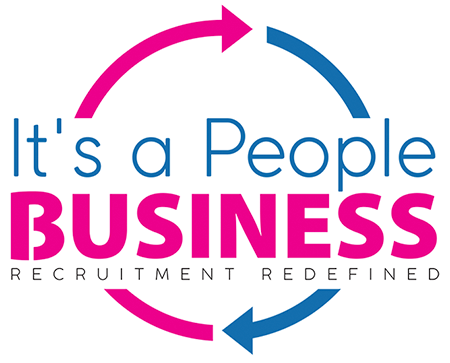
In today's fast-paced business world, change has become a constant. Whether it's a new technology, a new policy or a new product, organisations cannot afford to resist change and must embrace it to stay ahead of the competition. However, despite the obvious benefits of change, many individuals and organisations have a natural tendency to resist it, particularly when it comes to recruitment. As the talent market continues to evolve, recruiters must be able to recognise and address resistance to change in order to successfully adapt to new approaches and procedures.
1. Understand why resistance to change occurs in recruitment
1. Understand why resistance to change occurs in recruitment

Resistance to change is a common phenomenon that occurs in many organisations, especially during recruitment. It is a natural response to change because it threatens the status quo, which can result in uncertainty and feelings of anxiety. All too often, resistance to change is viewed as a negative reaction. However, it is important to understand that this resistance is not always caused by negativity towards the change itself. In many cases, resistance is the result of a lack of clarity regarding the rationale for the change, a lack of trust in the individuals implementing the change, or a fear of the consequences. Understanding the reasons for resistance and taking steps to address them can help organisations overcome resistance to change in recruitment and implement successful talent acquisition strategies.
2. Communicate the benefits of change to employees
2. Communicate the benefits of change to employees

Overcoming resistance to change is crucial for organisations to stay competitive and adapt to evolving markets. Resistance to change is a common roadblock during recruitment, but there are strategies that can be employed to minimise its impact. One important tactic is to Communicate the benefits of change to employees. Employees are more likely to embrace change when they understand how it will benefit them both personally and professionally. In order to effectively communicate these benefits, it is essential to establish clear communication channels and provide consistent messaging throughout the organisation. Employers should also be prepared to listen to feedback and concerns from employees and address any questions or issues that arise during the change process. By taking proactive steps to communicate with and involve employees in the change process, organisations can reduce resistance to change and increase the likelihood of a successful recruitment outcome.
3. Involve employees in the change process
3. Involve employees in the change process

Resistance to change can occur for various reasons, including fear of the unknown or lack of understanding about the benefits of the change. This is particularly common in the recruitment industry, where changes to processes and technologies can be viewed with scepticism, resistance, and even hostility. One effective strategy to overcome resistance to change is to involve employees in the change process. By including employees in the decision-making process, you can help ensure that they feel a sense of ownership and control over the change. This can be achieved through regular communication, collaborative problem-solving sessions, and training programs that teach employees new skills to adapt to the change. Ultimately, involving employees in the change process can lead to greater buy-in, improved morale, and a more seamless transition to the new way of working.
4. Provide training and resources to support the change
When it comes to overcoming resistance to change in recruitment, providing training and resources to support the change is a critical component of a successful strategy. Change can be difficult and can create resistance, but providing the necessary resources to develop the skills and knowledge needed to navigate the change can help alleviate some of the anxiety that comes with the unknown. This can include various types of training, such as in-person workshops, online courses, one-on-one coaching, or access to resources such as manuals, job aids, and templates. By providing these resources, organisations can help employees feel supported, empowered, and prepared for the changes ahead, which can ultimately lead to a more positive and successful implementation process.
Read More: The Future of Work: Predictions for Online Recruitment in the Next Decade
5. Monitor progress and adjust the change process as needed.
5. Monitor progress and adjust the change process as needed.

Resistance to change is a common phenomenon in the recruitment industry. Overcoming this resistance requires a systematic approach that addresses the underlying issues and motivates stakeholders to embrace the change. One of the key steps towards achieving this is to monitor progress and adjust the change process as needed. This involves setting clear goals and benchmarks for the recruitment process, and regularly reviewing the outcomes against these standards. It also requires open communication channels that allow stakeholders to provide feedback and recommendations for improving the change process. By doing so, the recruitment organisation can progressively improve the effectiveness of the change initiative, while also building trust and engagement among its stakeholders.
Read More: Mastering the Main Stages of Any Recruitment Discussion: A Practical Guide for Employers
Conclusion
In conclusion, overcoming resistance to change in recruitment can be challenging, but it is essential for businesses to grow and thrive. By involving employees in the change process, communicating effectively, and providing adequate training and support, organisations can break down barriers to change and create a culture that embraces innovation and continuous improvement. Addressing the root causes of resistance can help businesses not only implement new recruitment strategies but also foster a more engaged and motivated workforce eager to drive the success of the business.
As a call to action, we encourage you to reach out to It's a People.Business for expert guidance and support in implementing these best practices. Our team of recruitment professionals can help you develop a cost-effective and efficient hiring strategy that aligns with your business goals. Contact us today to learn more and take the first step towards building a strong and talented team for your small business.
